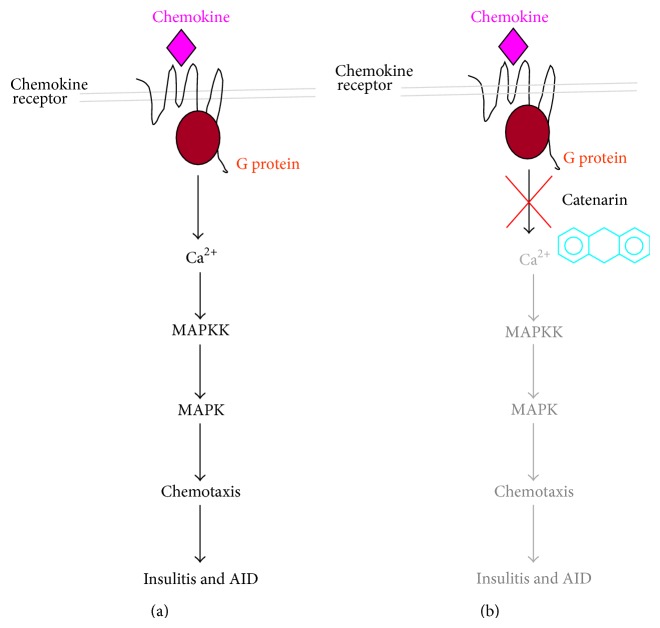Figure 4.
Mode of action of catenarin and other anthraquinones for AID. (a) Upon chemokine binding, a chemokine receptor is activated and induces G protein activation. A cascade of calcium mobilization and activation/phosphorylation of MAPKK/MAPK pathways leads to chemotaxis of leukocytes and, subsequently, insulitis and diabetes. (b) Catenarin and probably other anthraquinones inhibit leukocyte migration mediated by CCR5 and CXCR4 via the inactivation of MAPKs (p38 and JNK), MKKs (MKK6 and MKK7), and calcium mobilization. As a result, anthraquinones can suppress insulitis and diabetes.

